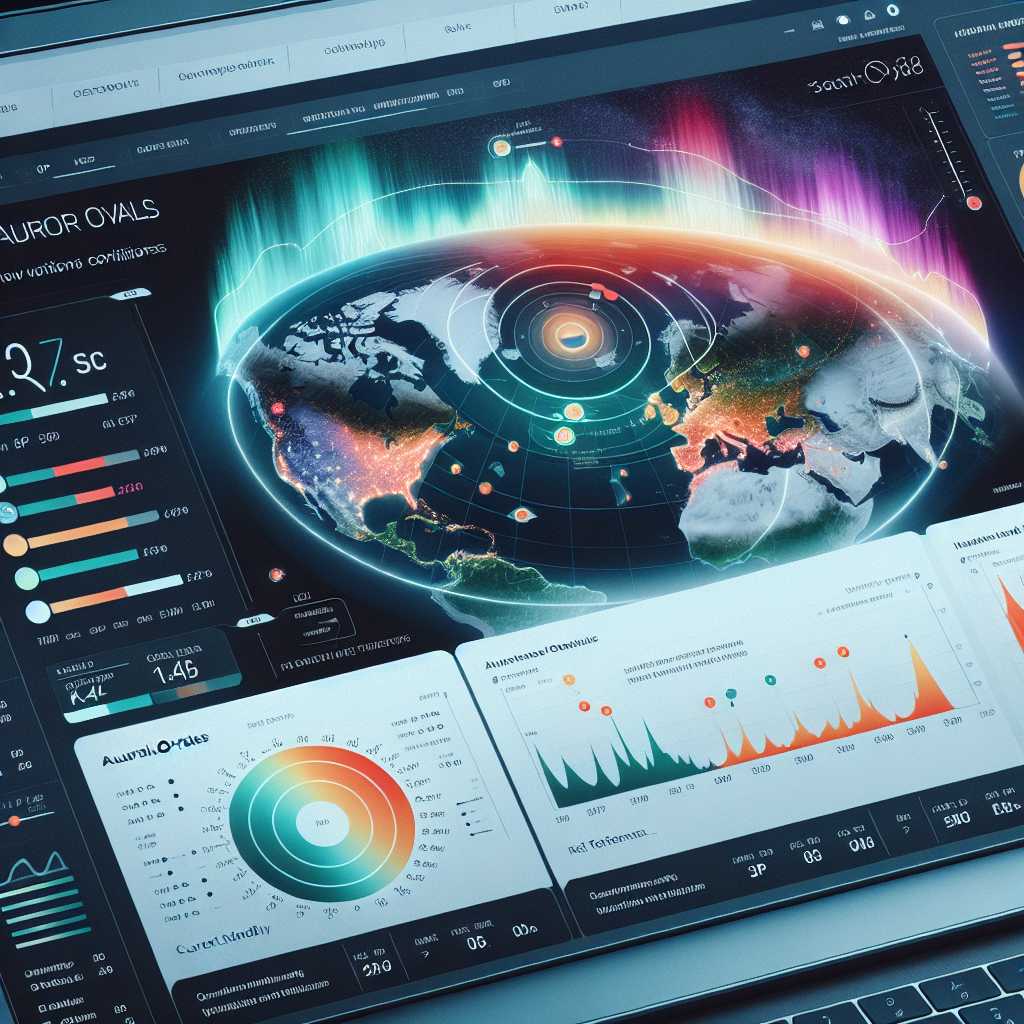###
Understanding Aurora Forecast: A Guide to Predicting Nature’s Light Show
Watching the mystical dance of the auroras, commonly known as the Northern (Aurora Borealis) and Southern (Aurora Australis) Lights, remains a bucket-list experience for many nature enthusiasts around the world. Being able to forecast the appearance of these natural phenomena enhances the opportunity for witnessing this extraordinary light display. Here we delve into the science of aurora forecasts, explain how they work, interpret the data provided, and discuss their relevance for tourists and scientists alike.
The Science Behind Auroras
Auroras, or polar lights, are a natural display of colored light in Earth’s sky predominantly seen in high-latitude regions around the Arctic and Antarctic. Understanding aurora prediction begins with solar activity. The Sun emits a continuous flow of charged particles known as the solar wind. When this stream of particles collides with Earth’s magnetic field and atmosphere, it can cause electrons and protons to be trapped in the Earth’s magnetic field, leading to complex changes that occasionally result in these particles colliding with gas molecules in our atmosphere. These collisions emit light, which is what we see as auroras.
How Are Auroras Forecasted?
Predicting when and where an aurora will occur is rooted in space weather science. Various space agencies and researchers monitor solar activity to forecast auroral displays.
Space Weather Monitoring
Solar flares and coronal mass ejections (CMEs), which send bursts of charged particles towards Earth, are key drivers of enhanced auroral activity. Space satellites like NOAA’s GOES and NASA’s ACE probe continuously collect data on these solar events. The existence of a CME can be determined within minutes to hours after its inception, giving scientists precious time to predict potential geomagnetic storms that might generate impressive auroras.
Geomagnetic Indices and Measurements
Geomagnetic indices such as the Kp index (which ranges from 0 to 9) are crucial for predicting auroras. This index represents the intensity of global geomagnetic activity and is based on data from magnetometers around the world. A higher Kp index signifies greater geomagnetic activity, increasing the chances of an aurora occurring further from the poles.
Aurora Ovals
Traditional forecasts also involve predicting the shape and size of so-called ‘aurora ovals’—the circular bands where auroras are most often observed. These ovals expand equatorward during high geomagnetic activity, thus determining where auroras can be potentially seen.
Real-Time Data Platforms
Modern technology allows the public access to real-time aurora forecasts through various online platforms. Websites like SpaceWeatherLive.com, provide up-to-date information about space weather conditions related to auroras. Users can find current Kp index readings, solar wind parameters, and even alerts for when conditions are right for an auroral display.
Practical Tips for Aurora Chasers
When planning to view an auroral display, consider factors such as:
– Location: Opt for higher latitude areas within or near the aurora ovals.
– Time: Choose clear nights and be prepared to wait since peak times vary.
– Dark Skies: Avoid light pollution by getting away from city lights.
Implications for Tourism and Research
The forecasting of auroras has significant implications for both tourism and research.
Tourism Industry Support
Tourism in aurora-prone regions greatly relies upon accurate forecasting. Travelers frequently book trips largely based on the expectation of seeing auroras; hence accurate predictions can lead to increased satisfaction and inbound tourism growth in places like Iceland, Norway, Canada, or Southern New Zealand.
Scientific Community Benefits
Within scientific circles, understanding and predicting geomagnetic storms has important implications for protecting satellites and communication systems from space weather eruptions, thereby preserving the integrity of modern infrastructure reliant on space-based technology.
Notes
Image Description
This hypothetical image would show an annotated graphic depicting two key concepts: an overlay of the auroral ovals on a map centered on the North and South poles to illustrate likely viewing locations; alongside a data chart displaying live feed of current Kp index readings as well as forecasts for coming days. Pop-up alerts on the chart would indicate optimal viewing conditions during heightened periods of geomagnetic activity.
